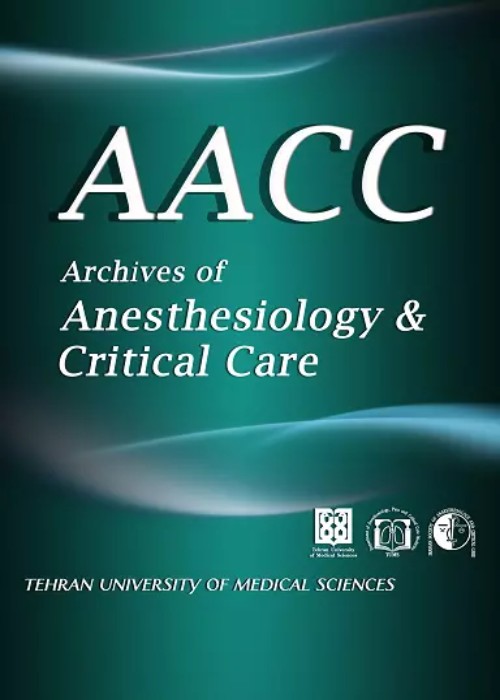Determination of Antibiotic Resistance Pattern of Organisms Isolated from Endotracheal Tube Cultures of Patients Admitted to Intensive Care Unit
It is widely accepted that increased prevalence of antibiotic resistance of pathogens grown in the respiratory system in intensive care unit (ICU) patients is a very serious problem causing expansion of mortality. The most important strategy to prevent the occurrence and appropriate solution to control the antibiotic resistance is to thoroughly investigate the pattern of resistance in the studied ward. Therefore, the purpose of this study was to determine the antibiotic resistance pattern of organisms isolated from endotracheal tube secretions of patients admitted to ICU of Khatam-Al-Anbia Hospital at Zahedan in Iran.
In the present retrospective and descriptive cross-sectional study, the medical records of patients hospitalized during 2013-2018 were included by census method and then selected based on inclusion criteria (n=1387). The required data, including age, gender, type of microorganism isolated from endotracheal tube cultures, antibiotic resistance and sensitivity, duration of intubation and cause of hospitalization, were recorded for each patient. Finally, the data were analyzed by descriptive statistics using SPSS 16 software.
Mean age of patients was 44.66 ± 21.39 years and mean duration of intubation was 17.96 ± 10.99 days. Stroke was the most common cause of hospitalization with a prevalence of 553 patients (49%). The prevalence of positive culture of endotracheal tube secretions was 1128 (81.3%) of which 71.5% were male (n=807) and 28.5% were female (n=321). The cultures of endotracheal tube secretions resulted in 933 (82.7%) gram-negative bacteria, 191 (16.9%) gram-positive bacteria and 4 (0.4%) mixed isolates. The most prevalent gram-negative bacterium was Acinetobacter baumannii (37.2%) with the highest and lowest antibiotic resistance to Meropenem (95.1% resistance) and colistin (99.5% sensitivity), respectively. In addition, the most prevalent gram-positive bacterium was Staphylococcus epidermidis (50.3%) with the highest and lowest antibiotic resistance to Meropenem (85.7% resistance) and Vancomycin (92.2% sensitivity).
The findings of the present study illustrate that there was widespread bacterial resistance to respiratory tract infections in our ICU patients. Due to the high sensitivity of gram-negative bacteria to colistin, the use of antibiotic combination with colistin in the control of pulmonary infections caused by these organisms can be a good choice. In addition, in the case of gram-positive bacteria, the highest sensitivity was to vancomycin; therefore, it can be the selective antibiotic to control infections caused by these bacteria.
- حق عضویت دریافتی صرف حمایت از نشریات عضو و نگهداری، تکمیل و توسعه مگیران میشود.
- پرداخت حق اشتراک و دانلود مقالات اجازه بازنشر آن در سایر رسانههای چاپی و دیجیتال را به کاربر نمیدهد.



